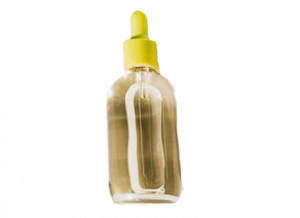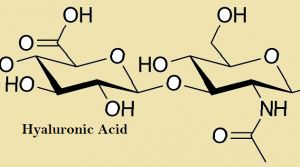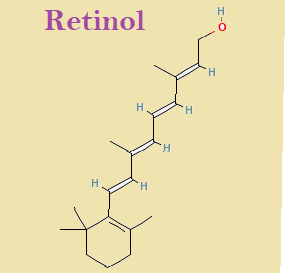We investigate the properties of hyaluronic acid vs retinol to evaluate their comparative effects. In this article, we’ll explore the differences between these two skincare powerhouses and help you decide which one is right for you.
Hyaluronic Acid vs Retinol: Which is Better?
Both hyaluronic acid and retinol offer significant benefits when it comes to anti-aging skincare, but they work in very different ways. Here’s a breakdown of the pros and cons of each:
Hyaluronic Acid
Pros:
- Helps to hydrate and plump the skin, reducing the appearance of fine lines and wrinkles.
- Is gentle and non-irritating, making it suitable for all skin types.
- Can be used in conjunction with other skincare products.
Cons:
- Does not actively treat fine lines and wrinkles, only helps to reduce their appearance by plumping the skin.
- Results are temporary and require ongoing use.
Retinol
Pros:
- Helps to speed up cell turnover, which can improve the overall texture and tone of the skin.
- Can actively treat fine lines and wrinkles, making them less noticeable over time.
- Can help to prevent future signs of aging.
Cons:
- Can be irritating, especially for those with sensitive skin.
- Should not be used in conjunction with certain other skincare products.
- Results may take longer to become noticeable than with hyaluronic acid.

Which Should You Choose: Hyaluronic Acid vs Retinol?
Choosing between hyaluronic acid and retinol depends on your individual skincare needs and concerns. If you are primarily concerned with hydration and plumping of the skin, then hyaluronic acid may be the better choice for you. If you are looking for an active ingredient that can help to treat fine lines and wrinkles, then retinol may be the way to go.
It’s also worth noting that you can use both hyaluronic acid and retinol in your skincare routine. However, it’s important to use them correctly and not to mix them together. Use hyaluronic acid in the morning to hydrate your skin, and retinol at night to allow it to work while you sleep.
What is Hyaluronic Acid?
Hyaluronic acid is a naturally occurring substance in our bodies that helps keep our skin hydrated and plump. It is a polysaccharide, which means it is a type of carbohydrate made up of multiple sugar molecules.

One of the unique properties of hyaluronic acid is its ability to hold water. In fact, it can hold up to 1,000 times its weight in water, making it an extremely effective moisturizer for the skin. This ability to retain moisture is essential for keeping the skin looking youthful and healthy.
Hyaluronic acid is found in high concentrations in the connective tissues of our bodies, including our skin, joints, and eyes. In the skin, it is located in the dermis, which is the middle layer that contains collagen and elastin fibers. Hyaluronic acid helps to keep the skin firm and plump by binding to water and increasing its volume.
As we age, the amount of hyaluronic acid in our bodies decreases, leading to a loss of moisture in the skin. This can result in dryness, fine lines, and wrinkles. This is why hyaluronic acid has become such a popular ingredient in skincare products.
When used in skincare or with microneedling, hyaluronic acid acts as a humectant, drawing moisture from the air and trapping it in the skin. This helps to keep the skin looking youthful and supple. Hyaluronic acid is also beneficial for those with oily skin, as it is a lightweight moisturizer that does not leave a heavy, greasy residue.
Another benefit of hyaluronic acid is its ability to help soothe and calm the skin. It has anti-inflammatory properties that can help to reduce redness and irritation, making it a great ingredient for those with sensitive skin.
Hyaluronic acid is not only found in skincare products but also in injectable fillers used for cosmetic purposes. These fillers are injected under the skin to plump up areas that have lost volume due to aging, such as the cheeks or lips. The results of hyaluronic acid fillers can last anywhere from six months to two years, depending on the type of filler used and the individual’s metabolism.

While hyaluronic acid is generally considered safe and well-tolerated, it is important to note that some people may experience an allergic reaction to it. If you are considering using a product that contains hyaluronic acid and have sensitive skin, it’s always a good idea to do a patch test first to ensure you don’t have a reaction.
New skincare products, like Fibroquin Essence, are taking advantage of some of the characteristics of hyaluronic acid.
What is Retinol?
Retinol is a derivative of vitamin A that is often used in skincare products to help improve the overall health and appearance of the skin. It is a type of retinoid, which is a family of compounds that are chemically related to vitamin A.

Retinol is a powerful antioxidant that can help to reduce the appearance of fine lines, wrinkles, and other signs of aging. It works by increasing cell turnover, which helps to stimulate the production of collagen and elastin in the skin. Collagen and elastin are proteins that are essential for keeping the skin firm and elastic, and their production decreases as we age.
One of the unique properties of retinol is its ability to penetrate the skin deeply. This allows it to work at a cellular level, where it can help to repair and rejuvenate damaged skin cells. Retinol can also help to reduce the appearance of hyperpigmentation and age spots, making it an excellent ingredient for those looking to even out their skin tone.
Another benefit of retinol is its ability to unclog pores and prevent acne breakouts. It works by regulating the production of oil in the skin, which can help to prevent the buildup of bacteria and dead skin cells that can lead to acne.
Retinol is a potent ingredient that can cause irritation and dryness if used incorrectly. It is important to start with a low concentration of retinol and gradually work your way up to a higher concentration over time. This can help to minimize any potential side effects and ensure that your skin is able to tolerate the ingredient.
It is also important to note that retinol should not be used during the day, as it can make the skin more sensitive to the sun. It is best to use retinol at night and to always wear sunscreen during the day to protect your skin from sun damage.
Retinol is available in a variety of different forms, including creams, serums, and oils. When choosing a retinol product, it is important to look for a formula that is well-formulated and contains other beneficial ingredients to help hydrate and nourish the skin.
Can Hyaluronic Acid and Retinol be Used Together?
One of the most common misconceptions is that Hyaluronic Acid and Retinol cancel each other out when used together. The truth is, these two powerful ingredients can actually complement each other, leading to impressive results for your skin.
The Benefits of Combining Hyaluronic Acid and Retinol
Instead of challenging ‘hyaluronic acid vs retinol‘, perhaps we should be asking a different question. When used in combination, Hyaluronic Acid and Retinol address different skin concerns effectively. Hyaluronic Acid ensures your skin remains hydrated, preventing the potential dryness often associated with Retinol use. The two work synergistically, offering improved skin texture, reduced wrinkles, and a more youthful appearance.
Hyaluronic Acid vs Retinol References
Retinoids: active molecules influencing skin structure
Use of Retinoids in Topical Antiaging Treatments
Wrinkle Treatments and Other Anti-aging Products